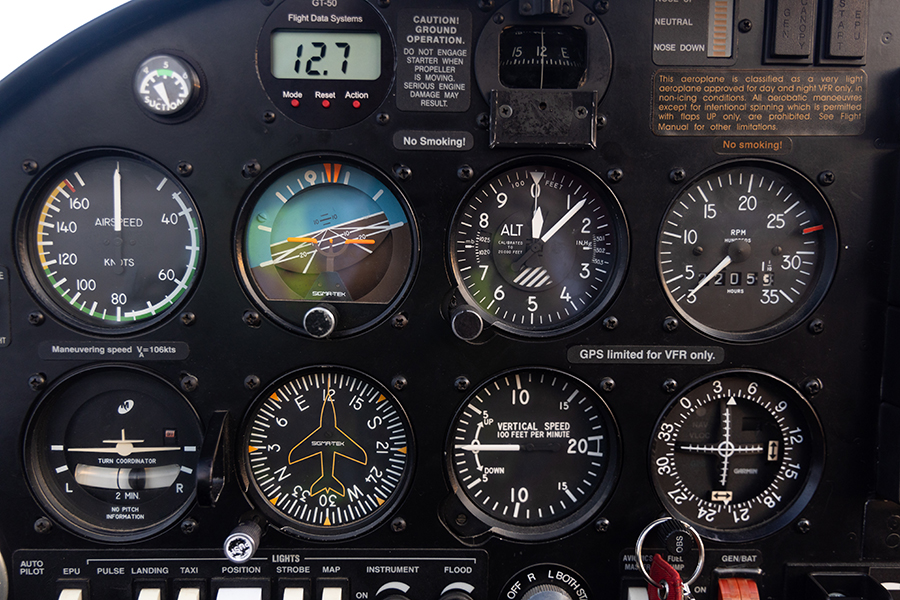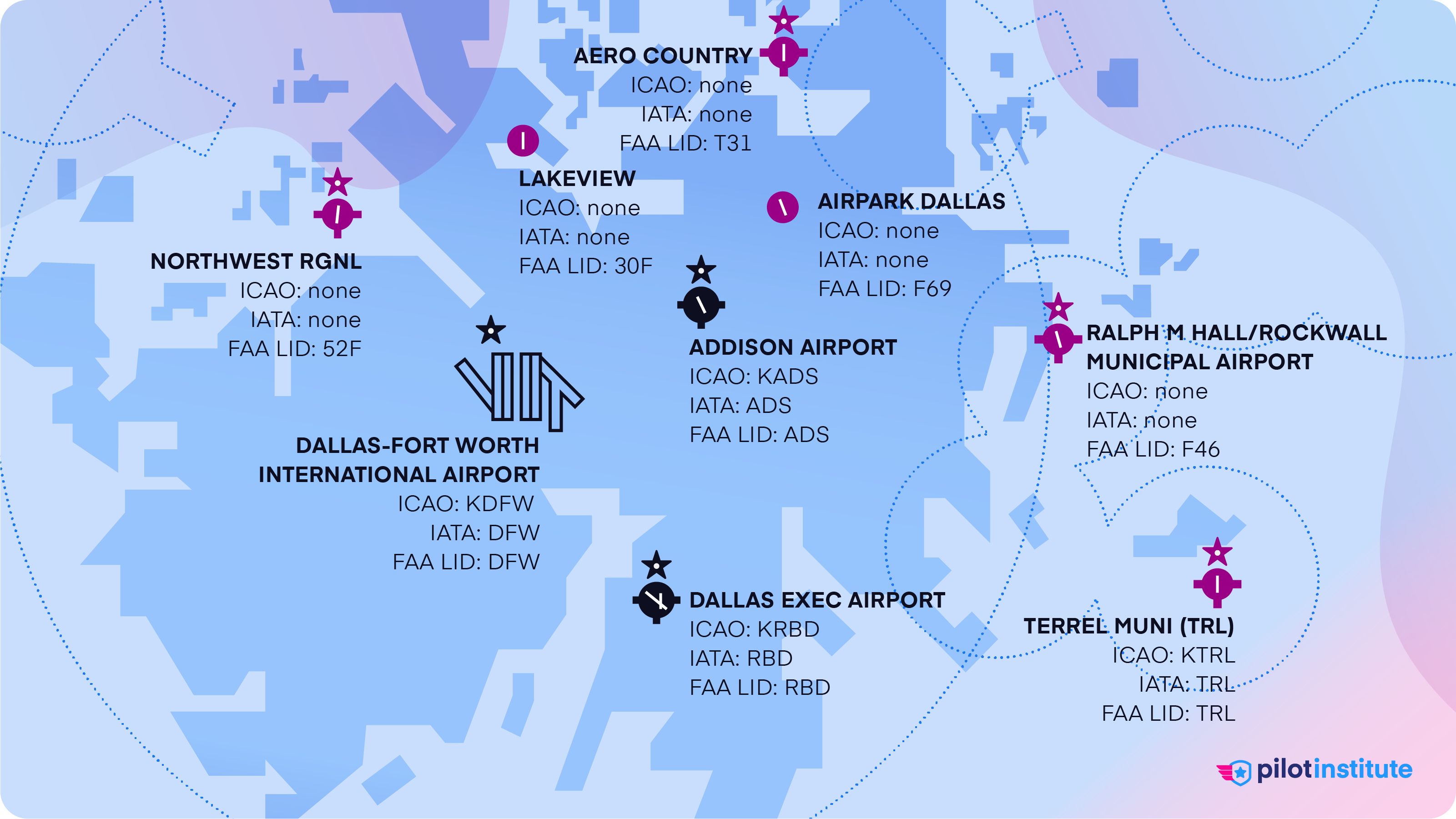Magnetic variation and deviation are terms often misused or confused with one another.
So what is the difference between deviation and variation?
- Magnetic variation: the angular difference between true north (geographic north) and magnetic north.
- Magnetic (Compass) deviation: the difference between the (inaccurate) magnetic heading indicated by the compass and the actual magnetic heading of the aircraft.
Let’s take a look at the differences in detail.
Magnetic Variation

Magnetic variation, also known as magnetic declination or simply “variation,” is the angle between true north and magnetic north. Magnetic variation is affected by the Earth’s shifting magnetic field, which causes a difference in the direction of where a compass needle points compared to the actual geographic location on the Earth. The amount of variation for a particular location changes over time as the position of magnetic north slowly shifts.
Isogonic lines help pilots compensate for this by showing different lines of magnetic variation on their sectional charts, making it easier to plan using a specific magnetic heading.
Calculating Magnetic Variation
To calculate your magnetic track (the heading you see on your compass when there is no wind), you’ll either subtract easterly variation or add westerly variation. An easy way to remember this is using the rhyme “East least, West best.”
For example:
- If the variation is 9 degrees West (West best), you will add 9 degrees to your true track to get your magnetic track (your magnetic heading required will be found when calculating the wind correction angle).
Magnetic Deviation

Avionics and magnetic material in an airplane interfere with the magnetic field of a magnetic compass. This interference with the magnetic compass causes magnetic deviation, also known as “compass deviation.”
Magnetic deviation is the difference between the (inaccurate) magnetic heading indicated by the compass and the actual magnetic heading of the aircraft.
Magnets inside the compass are used to counteract magnetic interference. A compass card, usually placed on or near the magnetic compass, provides the heading required for a specific actual heading.
For example:
- To fly an actual heading of 180 degrees, the compass card indicates that an indicated compass heading of 175 degrees must be maintained.
- In other words, while the compass will indicate 175 degrees, the actual magnetic heading will be 180 degrees.
This difference between actual and indicated is known as compass deviation, which is usually no more than a few degrees for a given heading.
Next time you’re flying, try putting your headset on the dash near the compass to see if it affects the compass reading. The magnets in your headset will likely change the magnetic field, which would then show a difference in the heading.
Conclusion
We hope this quick explanation of the differences between magnetic deviation and variation has laid to rest any confusion you had between the two.
By understanding the difference between magnetic variation and compass deviation, you can plan your flights with confidence. A pilot with a deeper understanding of navigation is a safer one.
So, review your sectional chart to identify any isogonic lines (East least, West best), and remember to check the compass card when using the compass.
Happy navigating!



